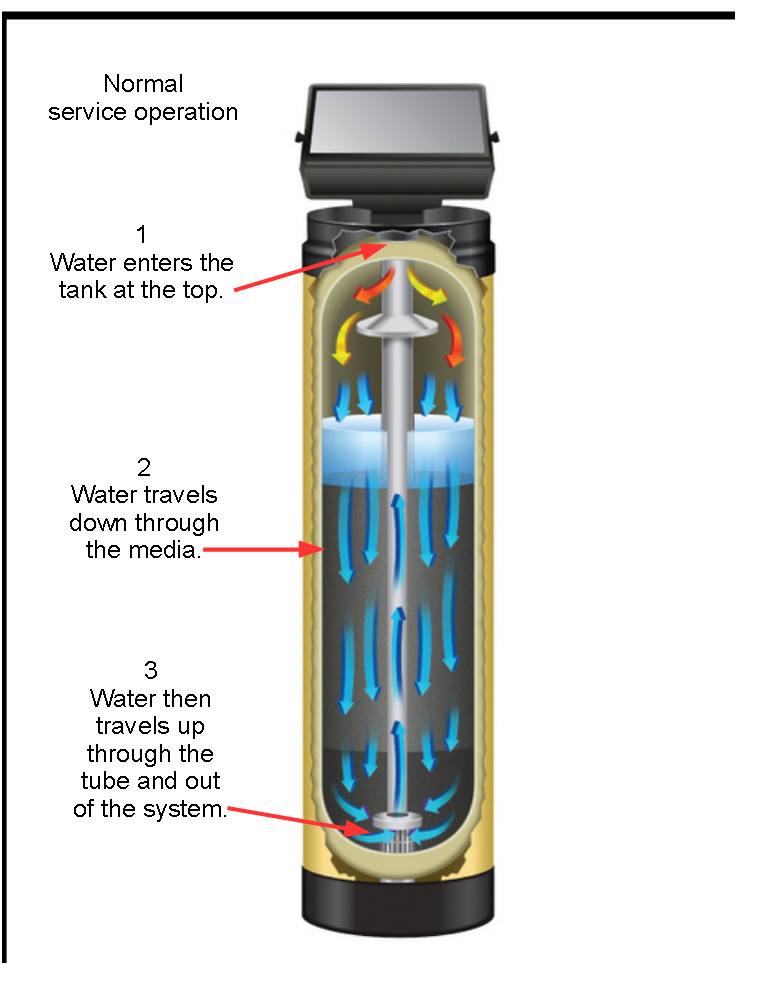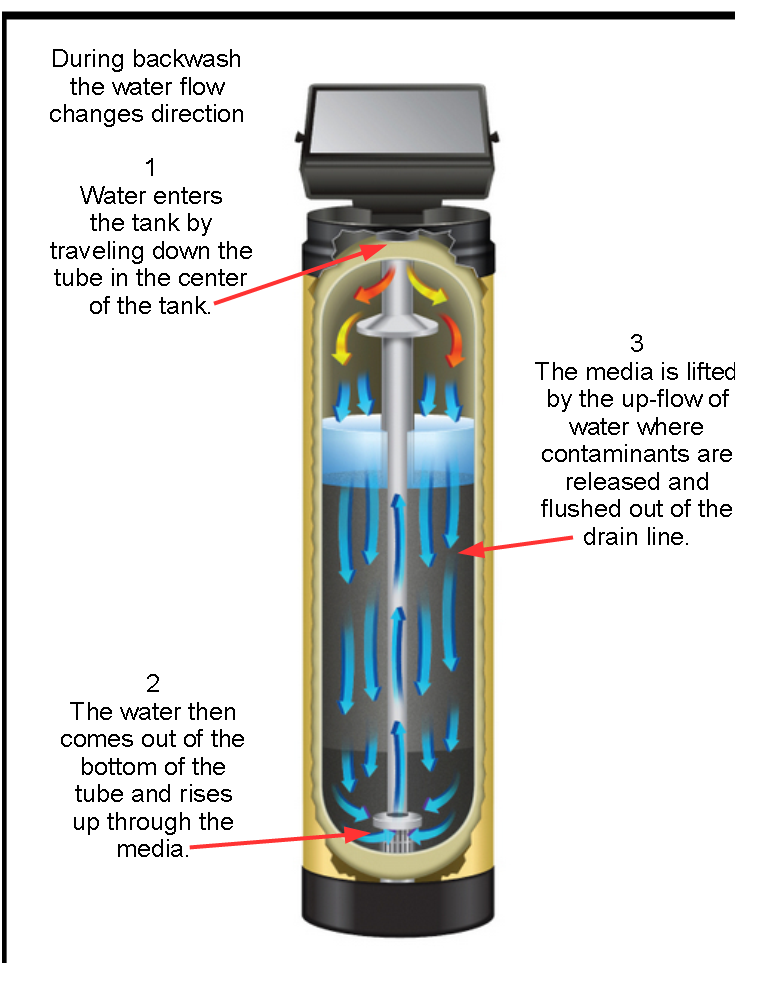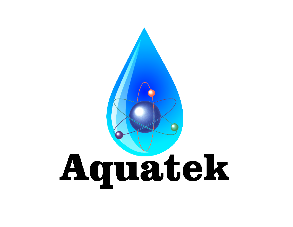I have a water softener, how does it really work?
I have a water softener, how does it really work?
Q:
I have a water softener, how does it really work?
A:
Hard water can be tough on your home, your skin and your wallet. Water softener counter acts those effects, by creating better quality water that extends the life of your appliances while, also helping you and your home look and feel better.
Soft water leads to:
No embarrassing stains or hard water deposits on tubs and showers
Quicker, easier household cleaning
Less spotting on dishes and glassware
Reduced energy bills (improved water heater efficiency)
Lathers better while using up to 50% less soap
Whiter, brighter and softer clothes
Extended life of water-using appliances
Smoother, softer skin
How Water Softeners Work
City or county water treatment plants deliver municipal water to your home and is generally hard between 7 – 14 grains. Well water can be much harder than 9 grains and can be much harder. This hardness in the water is generally a combination of calcium and magnesium. A water softener is specially designed to remove the hardness from the water. Water softeners can remove iron from the water as well and do OK with small amounts of iron (i.e. less than 1 PPM). If your water contains more than 1 PPM (parts per million) of iron, you should consider a filter unit that is specifically designed to remove iron like, the AquaTek Pro Aerator. Iron in high amounts can foul out a water softener which, is the reason we recommend the AquaTek Pro Aerator be placed before the water softener to eliminate iron fouling of the water softener.
One of the biggest misconceptions about water softeners is that the salt is what softens your water. What actually softens the water are thousands of tiny resin beads which is called the media within the tank that filters out hard water chemicals. The salt is used to clean the resin bead media during a regeneration cycle, allowing the system to continually remove hardness from your water supply through ion exchange.
Residential water softeners must on a periodic basis “regenerate” themselves by recharging their resin bed with a strong brine solution. A control valve on top of the softener initiates and controls this recharge and cycles of the regeneration process.
Residential water softeners have two kinds of control systems. The oldest and simplest is a clock timer, often called a day clock. It works like the timer on a stove. You pre select a day for regeneration, and when the day arrives, the timer initiates and carries out the regeneration of the softener. A typical setup might be every sixth day. The softener would regenerate every sixth day regardless of the amount of water used in the home.
A metered softener counts the gallons of water that passes through the softener, then initiates the regeneration after a pre-set number of gallons of water have been processed. If little water is used, regenerations are less frequent, and vice versa. Since the unit meters how many gallons are used your regeneration interval may be longer than every six days. When you reduce the number of days per year your water softener regenerates, you reduce your yearly salt bill. Metered units only regenerate when needed; this makes metered softeners more economical and friendlier to the environment than timer models.
Here’s a breakdown of how the water softening process works:

unit_operation_1
Hard water enters your home from a main water pipe or well, and travels to the water softener.
The water enters the top of the media tank travels down through the media.
Resin bead media in the tank attract and hold onto hard water minerals, removing them from the water.
Softened water then travels up through a tube in the center of the media tank then flows to the plumbing throughout your home.
The chemistry of water softener regeneration
During the softening cycle, sodium on the resin bead media is exchanged for hard water minerals in the water. After some time, the resin beads need to be rinsed free of the minerals and “recharged” so they can continue attracting and collecting hard water minerals.This “Recharging” or “Cleaning” of the resin bead media is called the regeneration cycle, and it’s why people must add salt to water softeners.
Here’s what happens:

unit_operation_2
The first step of a water softener regeneration is the backwash cycle.
During the backwash cycle the water changes direction from normal service operation by the control valve that sits on top of the media tank. The water enters the tank and travels down the tube in the center of the media. The water exits the bottom of the tube and lifts the Resin media up, releasing any sediment or other material trapped in the media. The backwash cycle also helps to eliminate compacting and clogging of the resin media bed. The system then changes water direction back to normal service flow operation. Some systems incorporate a short pause cycle to allow the resin to settle back down in the media tank and/or may include a rinse cycle.
The second step of the water softener regeneration process is the brine draw cycle.
A strong salt-water (brine) solution is created with the salt added to the softener’s brine tank. The brine solution flows through the resin tank, rinsing the beads and exchanging new sodium for the hard water minerals that have collected. The remaining brine solution (mostly chlorides) and hard water minerals are flushed from the tank and out the drain line. The resin beads are renewed with a fresh coating of sodium and ready to collect hard water minerals again.
The third step in the water softener regeneration process is the rinse/refill cycle.
Water will continue to flow through the unit as in normal service operation.
Excess chlorides and sodium are flushed from the media tank. During the rinse cycle, the control valve on top of the media tank will also refill the brine tank with water thus creating more brine for the next cleaning.
Note: Some systems have a post and “pre” setting for refill. The “pre” setting will refill the brine tank right before regeneration starts but, leaves the tank without water.
The “post” setting refills the brine tank at the end of the regeneration.The regeneration cycle generally takes about 1 1/2 hours. Depending on how many cycles the systems has and the time required for each cycle.
The above three steps in the regenerating cycles are the main steps in low end water softener or other self flushing filtration unit. The AquaTek Pro Line of control valves go beyond these steps because the valves are computerized and every aspect of the regeneration can be programmed to include 3, 4 or 5 cycles and two back washes instead of one with other valves.
